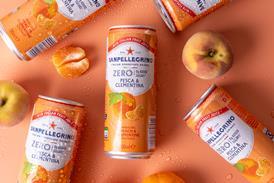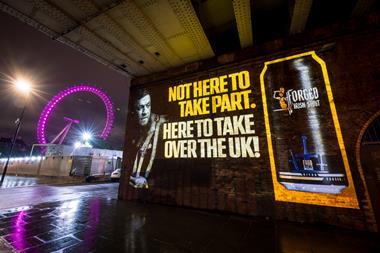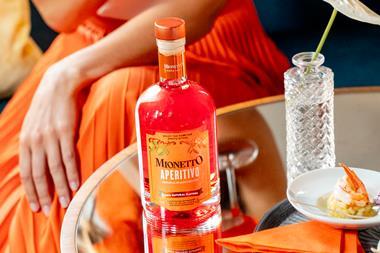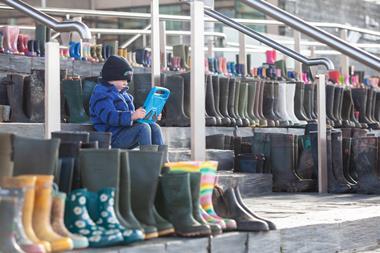Cider stands out clearly as the strongest growth category for the second year running, with a 15.4% increase over last year's take-home sales figures when combined with perry.
Cider's strength appears to be have been gained by wresting market share from the plummeting ready-to-drink category, which dropped nearly 13%.
And it added much-needed value to the overall take-home drinks market, with other categories performing unspectacularly.
The success of cider is now predicted to continue for a while longer, contrary to last year's fears that it was a temporary fad.
The industry recognises Magners as a strong influence - and the brand recorded an off-trade increase of 538.5% this year, albeit from a small base - but Strongbow, in the number one position, grew sales by 16% in the past year and most believe cider is now established as a strong category regardless of this brand.
Brand owner Scottish & Newcastle UK has been working hard to combat Magners' domination by launching its bottled Bulmers brand into the UK, as well as adding premium extensions to Strongbow with Jacques and Sirrus.
Other growth areas in the past 12 months have been the rosé and sparkling wine categories and the emergence of new entrants that ticked both boxes was a notable feature of 2006.
Total wine sales grew 1.8% to £4.3bn, with Hardys continuing to lead the category and Ernest & Julio Gallo recording the strongest individual growth of the top five brands, with sales up 21.7%.
The growing popularity of Californian wines and rosé has boosted Gallo's sales in the UK off-trade, as has its recent rebranding, which introduced The Gallo Wine Family parent brand.
In beer, Stella Artois has held on to the top spot but more than £32m was knocked off its value, despite a strategy to pursue more value-driven price promotions this year.
Foster's and Carlsberg recorded the highest value increases of the top beer brands in the past 12 months, both up more than 15%.
Despite the slowdown in lager growth over the past few years as consumers continue to spill into other alcohol categories, the sector is finally seeing innovation, with a mixture of citrus variants and low alcohol formats launched this year.
This explains the 2.7% growth recorded in the lager category during the past year compared with previous flat sales or a decline. In 2006 the industry welcomed Becks Vier and Bud Silver with interest, as signs of a lower alcohol trend in the UK began to emerge. The mid-strength beers were soon joined by Carling's C2.
The ales market was flat, while spirits are also at a standstill at approximately £2.6bn, although certain categories had a successful year and grew in value.
Category leader Smirnoff Red grew by 12.4% to more than £198m, indicating the continued popularity of vodka. Other areas of growth within spirits indicate that the at-home cocktail trend is still, perhaps, in its infancy, but consumers are increasingly mixing spirits such as gin and vodka in the home.
The ready-to-drink sector continues to struggle. The top three leading brands account for 61% of the total value sales, and of those, Smirnoff Ice and Bacardi Breezer recorded a decline of 15.9% and 22.2% respectively. WKD is the clear hero, moving into the top spot in the past 12 months through clever positioning and advertising directed at its target male audience.
The other brand worth noting is a relative newcomer to the declining category - Bacardi Half Sugar - which appears to have caught the eye of a growing number of consumers. The brand appeared in the top five for the first time, with a whopping 323% value increase. The company put its success down to its lower-sugar format which, it said, had strong appeal for its target female audience. n
Cider's strength appears to be have been gained by wresting market share from the plummeting ready-to-drink category, which dropped nearly 13%.
And it added much-needed value to the overall take-home drinks market, with other categories performing unspectacularly.
The success of cider is now predicted to continue for a while longer, contrary to last year's fears that it was a temporary fad.
The industry recognises Magners as a strong influence - and the brand recorded an off-trade increase of 538.5% this year, albeit from a small base - but Strongbow, in the number one position, grew sales by 16% in the past year and most believe cider is now established as a strong category regardless of this brand.
Brand owner Scottish & Newcastle UK has been working hard to combat Magners' domination by launching its bottled Bulmers brand into the UK, as well as adding premium extensions to Strongbow with Jacques and Sirrus.
Other growth areas in the past 12 months have been the rosé and sparkling wine categories and the emergence of new entrants that ticked both boxes was a notable feature of 2006.
Total wine sales grew 1.8% to £4.3bn, with Hardys continuing to lead the category and Ernest & Julio Gallo recording the strongest individual growth of the top five brands, with sales up 21.7%.
The growing popularity of Californian wines and rosé has boosted Gallo's sales in the UK off-trade, as has its recent rebranding, which introduced The Gallo Wine Family parent brand.
In beer, Stella Artois has held on to the top spot but more than £32m was knocked off its value, despite a strategy to pursue more value-driven price promotions this year.
Foster's and Carlsberg recorded the highest value increases of the top beer brands in the past 12 months, both up more than 15%.
Despite the slowdown in lager growth over the past few years as consumers continue to spill into other alcohol categories, the sector is finally seeing innovation, with a mixture of citrus variants and low alcohol formats launched this year.
This explains the 2.7% growth recorded in the lager category during the past year compared with previous flat sales or a decline. In 2006 the industry welcomed Becks Vier and Bud Silver with interest, as signs of a lower alcohol trend in the UK began to emerge. The mid-strength beers were soon joined by Carling's C2.
The ales market was flat, while spirits are also at a standstill at approximately £2.6bn, although certain categories had a successful year and grew in value.
Category leader Smirnoff Red grew by 12.4% to more than £198m, indicating the continued popularity of vodka. Other areas of growth within spirits indicate that the at-home cocktail trend is still, perhaps, in its infancy, but consumers are increasingly mixing spirits such as gin and vodka in the home.
The ready-to-drink sector continues to struggle. The top three leading brands account for 61% of the total value sales, and of those, Smirnoff Ice and Bacardi Breezer recorded a decline of 15.9% and 22.2% respectively. WKD is the clear hero, moving into the top spot in the past 12 months through clever positioning and advertising directed at its target male audience.
The other brand worth noting is a relative newcomer to the declining category - Bacardi Half Sugar - which appears to have caught the eye of a growing number of consumers. The brand appeared in the top five for the first time, with a whopping 323% value increase. The company put its success down to its lower-sugar format which, it said, had strong appeal for its target female audience. n


















No comments yet